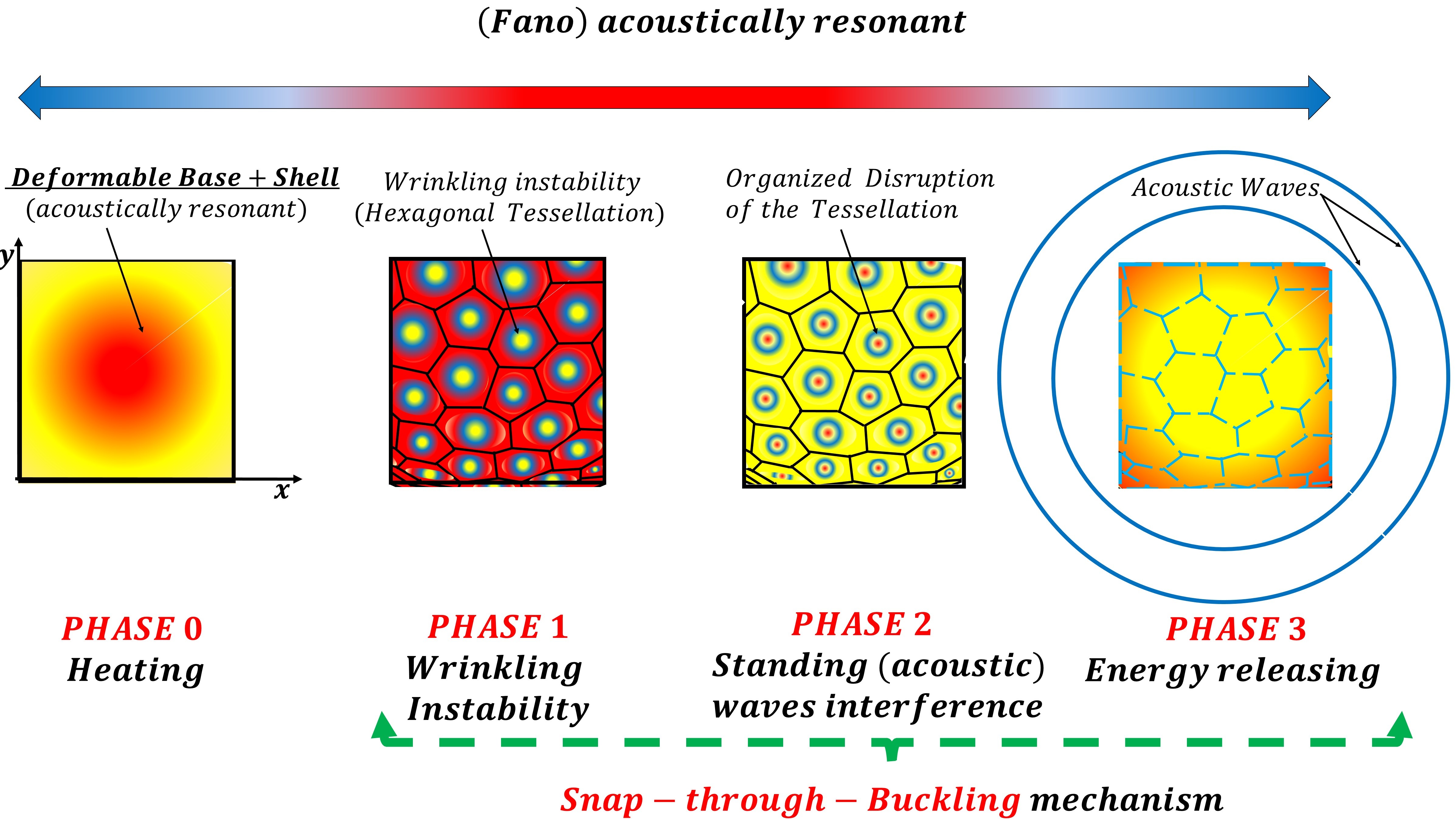We propose a highly efficient thermoacoustic energy converter based on the concept of Fano-based bistable systems. The proposed device, in its simplest version consists of a bilayer polymeric plate with harder base and softer shell. As shown in the picture, the heat source enforced at the base-shell interface induces thermo-mechanical stress fields. The stress field causes the occurrence of wrinkling patterns in the shell and the release of acoustic energy by a snap-through buckling mechanism. This phenomenon was extensively investigated along the years. The breakthrough is here represented by the use of a resonant shell (working as thermoacoustic transducer) never investigated before. We performed preliminary computational studies showing that, when the shell is acoustically resonant at a specific frequency, the synergetic interplay of snap-through and Fano-resonances is capable of producing high amplitude and long-lasting pressure oscillations. In other words, under specifics conditions, the synergetic interaction between wrinkling instabilities and Fano resonance is able to extract mechanical energy from the heat source. The so-generated mechanical oscillations can be converted in electrical energy for instance by using piezo-electric materials, or other sound-to-energy converting systems. The characteristics of the heat source have been selected to be representative of low-grade thermal sources (e.g. waste-heat, in particular intermittent sources) abundantly available in natural, industrial contexts, and space environments Importantly, the systems may be adapted to many different geometries spanning from the proposed plate (like a solar panel system) to core-shell cylinders in which the heat source can be both inside the tube (for instance an exhaust gas/liquid outlet), or outside the tube. Notably, the system may reach a theoretical Carnot efficiency of 88% with energy production exceeding 3kW/m2 for a gradient of 1°C between the heat source and the tube .

